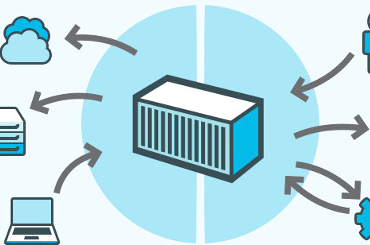As DevOps Embraces Containers, Skills Gap Emerges

Developers are making greater use of application container technologies as they seek to accelerate release cycles but barriers to widespread adoption remain, according to a new vendor survey.
Seattle-based continuous application delivery specialist Shippable said Tuesday (May 3) its survey of more than 300 U.S. software developers found that 52 percent are using containers in production for new applications. Fourteen percent said they are using the application delivery technology in development and test situations.
Meanwhile, a resounding 89 percent of respondents said they were at least "somewhat likely" to use containers in the next 12 months.
Similar to other emerging enterprise technologies like big data analysis, the survey also found a skills gap emerging as more companies look to speed application deployment while improving application flexibility. The Shippable survey conducted in March and April revealed that the main barrier to adoption was lack of in-house DevOp skills. Other barriers included "immature" container technology not ready for production along with lingering concerns over container security.
Other factors slowing adoption included the lack of infrastructure to run containers and the belief that the return on investment for container infrastructure remains unproven.
Part of the expected return is the promise that applications containers, enclosed pieces of code in a layer of software that can be transported between computers, will improve the overall efficiency of IT infrastructure. The survey nevertheless indicates container technology remains complex as early adopters seek to fine-tune their cloud and on-premise infrastructure to deliver applications faster using containers.
While the "use of container technology is clearly on the rise, there are still hurdles to overcome," Shippable CEO Avi Cavale acknowledged in releasing the survey results. "Companies can help themselves by training internal software teams and partnering with vendors and service providers that have worked with container technology extensively."
Early adopters did report measurable progress: Nearly three-quarters said they are shipping new applications at least 10 percent faster using container technology while 8 percent said they had accelerated delivery times by as much as 50 percent.
The survey also reflects the steady shift toward cloud-native applications: 31 percent of respondents are running applications in public clouds, 30 percent in private and 17 percent in hybrid clouds. Only 2 percent of those polled said they were running containers on-premise.
As the container ecosystem matures, rival vendors are banging heads over which platform or tool works best. For example, a recent OpenStack user survey found that Google's (NASDAQ: GOOGL) Kubernetes cluster manager was the leading container and platform-as-a-service for managing OpenStack applications, ahead of CloudFoundry, OpenShift and Apache Mesos.
For developers in the trenches, the Shippable survey ranked the Docker container registry first, followed closely by Amazon Web Services' (NASDAQ:AMZN) EC2 registry and Docker Hub. The latter is container leader Docker's development and test automation tool.
Once containers enter production, 52 percent of those polled said they are running applications on Google Compute Engine, with Microsoft (NASDAQ: MSFT) Azure Cloud (45 percent) and AWS (43 percent) not far behind.
Founded in 2013, Shippable claims to be the first software developer to use Docker containers in production.
Related
George Leopold has written about science and technology for more than 30 years, focusing on electronics and aerospace technology. He previously served as executive editor of Electronic Engineering Times. Leopold is the author of "Calculated Risk: The Supersonic Life and Times of Gus Grissom" (Purdue University Press, 2016).










